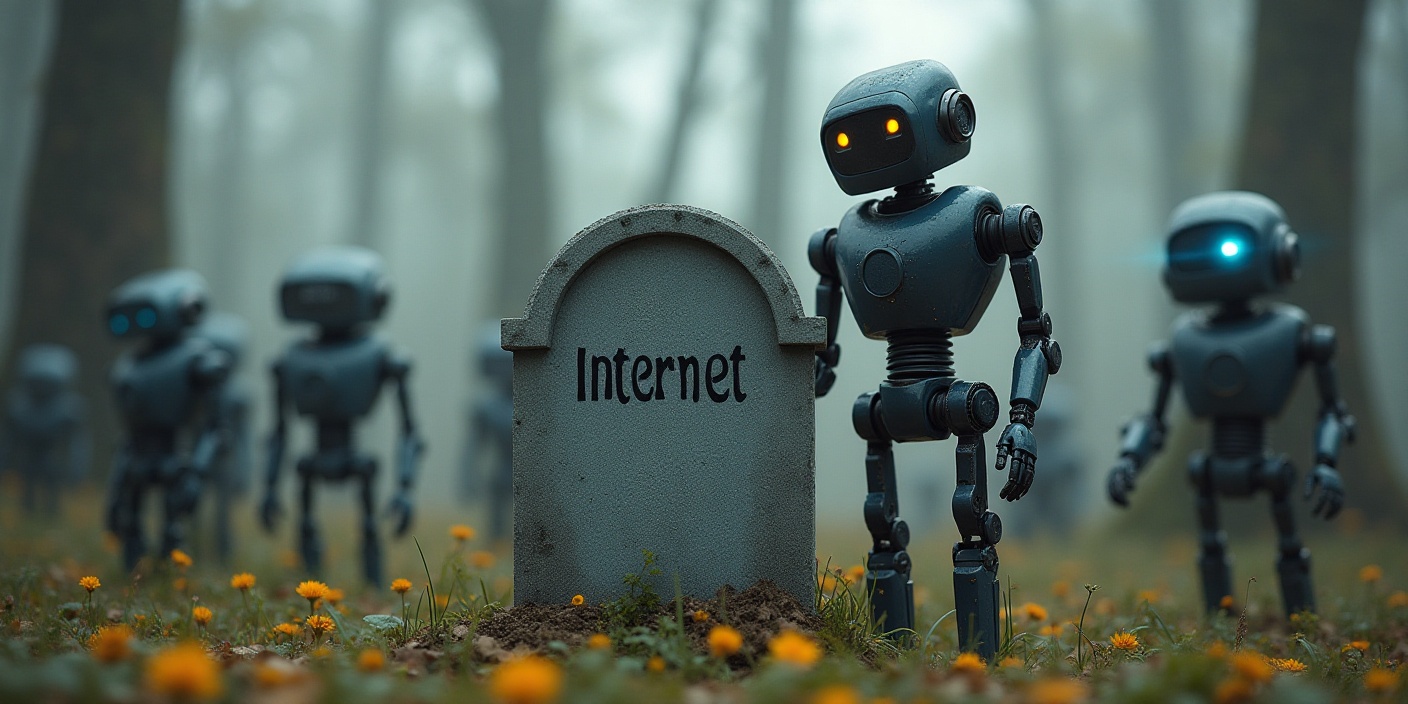The Dead Internet Theory: A Modern Conspiracy
In recent years, there has been a somewhat weird and unsettling theory that has emerged from the depths of internet forums and conspiracy circles.
It is called the “Dead Internet Theory”
The basic idea is that the internet as we know it has been largely taken over by bots and AI-generated content, leaving genuine human interaction as a rare occurrence. But what exactly is this theory, and why has it gained traction?
Claims
The theory has two main components:
Bot Dominance: Proponents believe that a significant portion of internet traffic and content is generated by bots. These bots are said to create posts, comments, and even entire websites, making it difficult to distinguish between human and automated activity.
Algorithmic Control: The theory also suggests that search engines and social media platforms use algorithms to curate content in a way that manipulates public perception. This is believed to be a coordinated effort by state actors and large corporations to control the flow of information and influence consumer behaviour. (Think about how shopping sites like Amazon are able to suggest products to you)
Cultural Impact
‘Despite its controversial nature, the Dead Internet Theory has resonated with many people who feel disillusioned with the modern internet.
The sense of unease and paranoia expressed by its proponents reflects broader concerns about privacy, data security, and the authenticity of online interactions
In a world where AI and automation are becoming increasingly prevalent, the theory serves as a reminder of the importance of maintaining genuine human connections in the digital age.
Origins and Spread
The Dead Internet Theory first gained significant attention in 2021 when a user named “IlluminatiPirate” posted a detailed explanation on the forum Agora Road’s Macintosh Cafe. The post claims that most of the internet’s content is now generated by bots, with human activity being minimal and heavily curated by algorithms. This theory quickly spread, gaining attention from various high-profile YouTube channels and even mainstream media outlets like The Atlantic.
Evidence and Criticism
Supporters of the Dead Internet Theory point to several phenomena as evidence. For instance, the increase in bot traffic, the prevalence of AI-generated content, and the phenomenon known as “link rot” (where links to content become broken over time) are all cited as indicators that the internet is not as human-driven as it once was.
However, critics argue that while these issues are real, they do not necessarily support the broader claims of the theory. The increase in bot traffic, for example, can be attributed to the rise of automated services and the need for businesses to manage large volumes of data. Similarly, algorithmic curation is a well-known practice used to enhance user experience and target advertising, rather than a sinister plot to control the population.
Conclusion
While the Dead Internet Theory may seem extreme, it highlights real issues that deserve attention. The rise of bots and AI-generated content, along with the power of algorithms to shape our online experiences, are significant trends that impact how we interact with the internet.
Whether or not you believe in the theory, it encourages us to think critically about the digital world and strive for a more transparent and human-centered internet.

